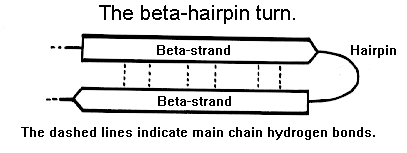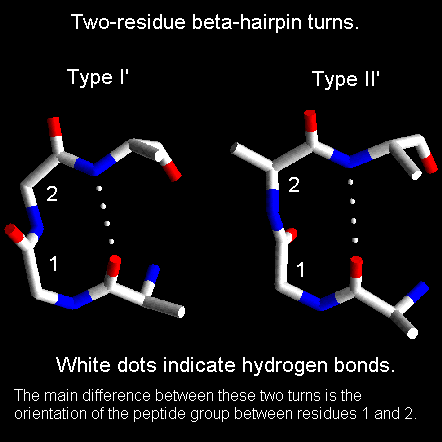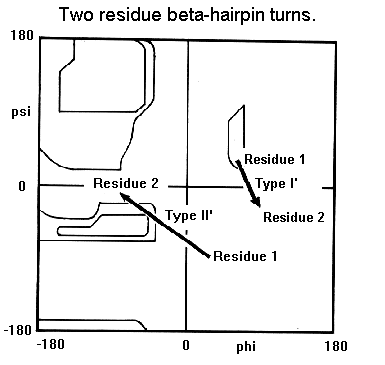

|
|
|
Beta-hairpin turns occur between two antiparallel beta-strands as shown schematically below.

70% of these hairpin turns are shorter than seven residues in length and turns containing two residues form the largest single component. In this class, types I' and II' are the most common.

The residues forming these two-residue turns have torsion angles in characteristic regions of the Ramachandran plot.

For type I' turns, residue 2 is always glycine whereas for type II' turns residue 1 is always Gly. This is because amino acids other than glycine would cause steric hindrance involving the residue's side chain and the main chain.
j.cooper 2/1/95
Last updated 4th Nov '96